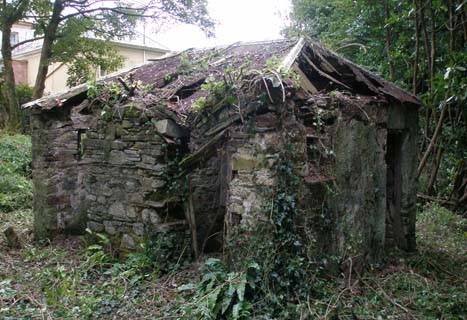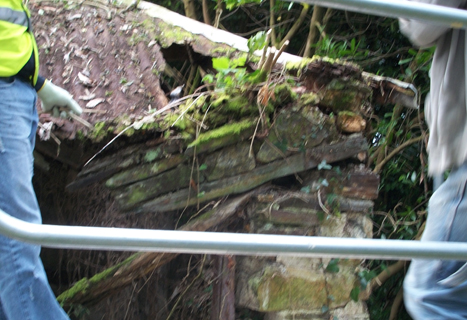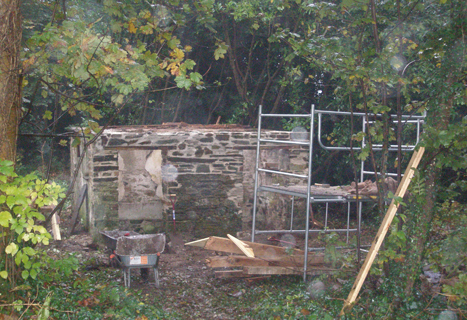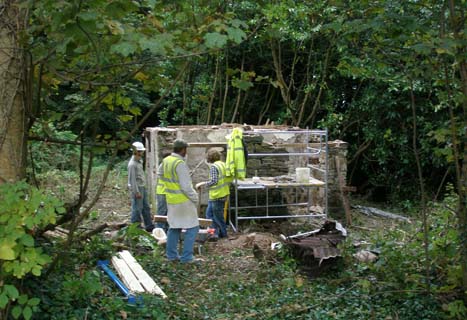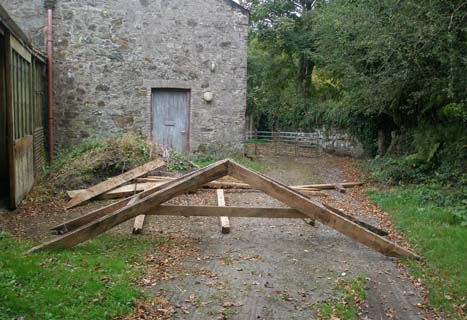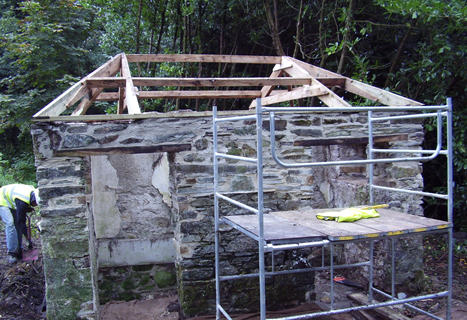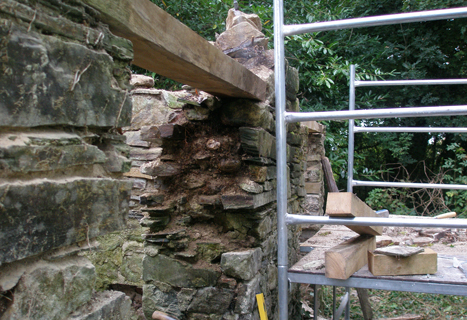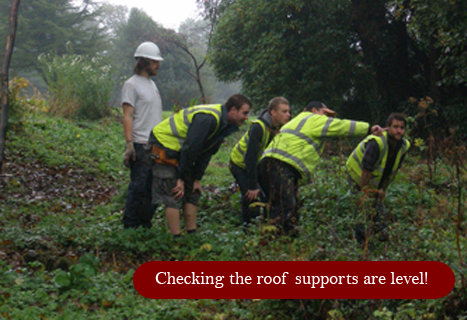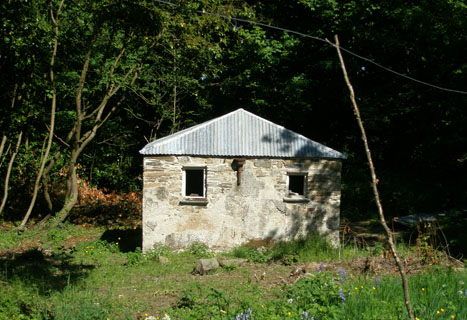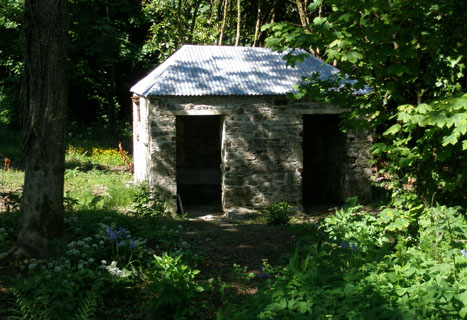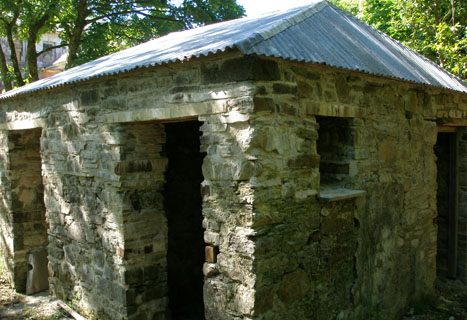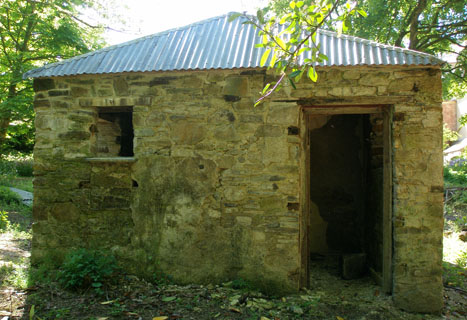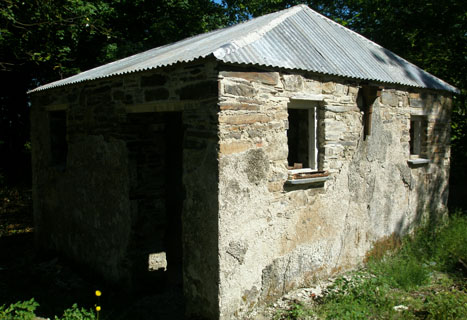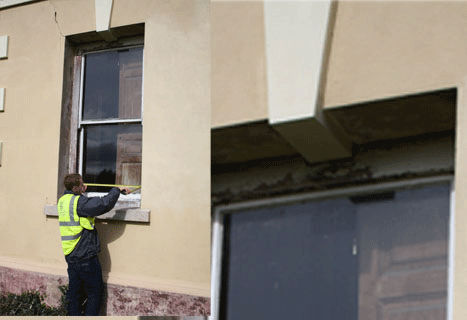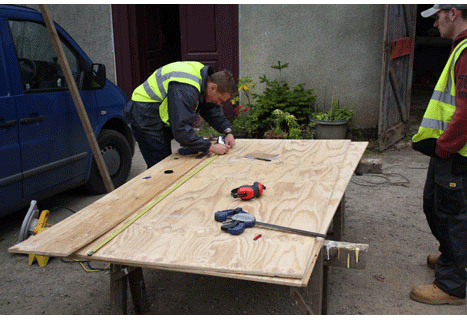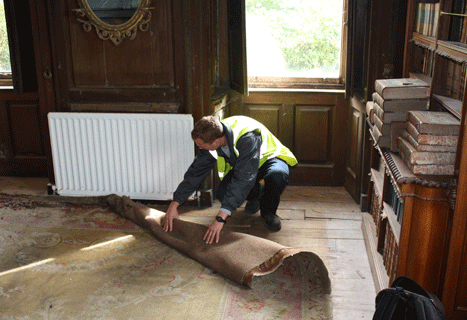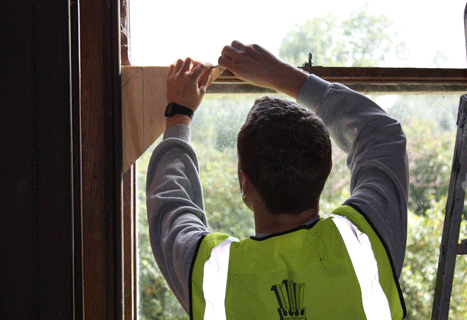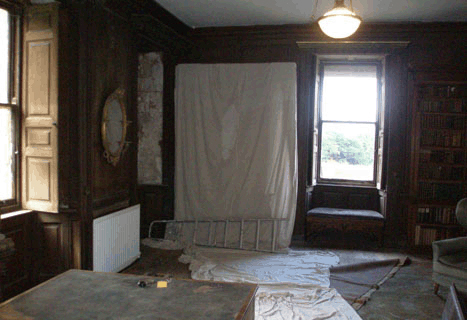In 2009 we took the plunge, making the decision to go on Channel 4 Country house rescue programme. The production company brought the Prince’s Foundation for the Built Environment on board as part of their plan to make an engaging TV programme.
As part of the filming they began a few projects, most of which they did not finish as they left with the film crew and disappointingly they have not returned. Nevertheless their was very welcome contribution.
Below are galleries detailing some of what they undertook as part of the filming.
The Privy
One of the projects undertaken by The Trainee Craftsmen of The Prince’s Foundation for The Built Environment, as part of their period with us has been the consolidation of the structure of our block of Privies.
The corrugated iron roof of the building was rusting and collapsing under a burden of plant growth, and on one side the stonework below was also collapsing. Debris had built up round and inside the building disguising the true floor and ground levels.
The plant growth was removed, the remains of the sheeting taken off, and the timber roof structure dismantled.
The stonework was photographed, taken down to sound levels, and built up again. Lintels beyond repair were replaced with Oak ones from stock and others were consolidated.
Where previously we had a roof stabilised by a tree, we had been left with new joists open to the varying Devon weather! Luckily our builders were able to finish the roof to secure the building for future restoration projects.
Plastering
The rendered brick cill of one of the windows had fallen apart. As part of render repairs adjacent to the window this cill has been rebuilt. A hardboard template was made and the cill cut out leaving one brick as a pattern.
Old bricks which had been saved back ( In the tradition of old Country Houses we don’t throw anything away that might be useful) were set in and the cill and adjacent wall were replastered using a 3.1 lime mortar mix.
The Library Window
Three Trainee Craftsmen Carpenters of The Prince’s Foundation for the Built Environment were given the task of repairing one of the Library windows. As with many conservation jobs this apparently simple task had many ramifications and turned into a major project.
It was noted that the cill of the window had rotted and the frame had dropped about 1 inch (25mm). As owners we asked if it would be possible to raise the window back into it’s original position. As the window was surrounded by panelling which we did not wish to disturb, we suggested that this might be done by jacking.
This led to investigation of the floors above and below the window. On opening up, surprise! surprise! We found rotted joists in both. More opening up ensued to ascertain the extent of repairs, a good deal of history being revealed in the process, as we explain elsewhere. Action was agreed and the floor repairs carried out. So after some delay work resumed on the original job and the sashes were repaired.
But time ran out and we still have to repair the cill and set the window in it’s original position.



